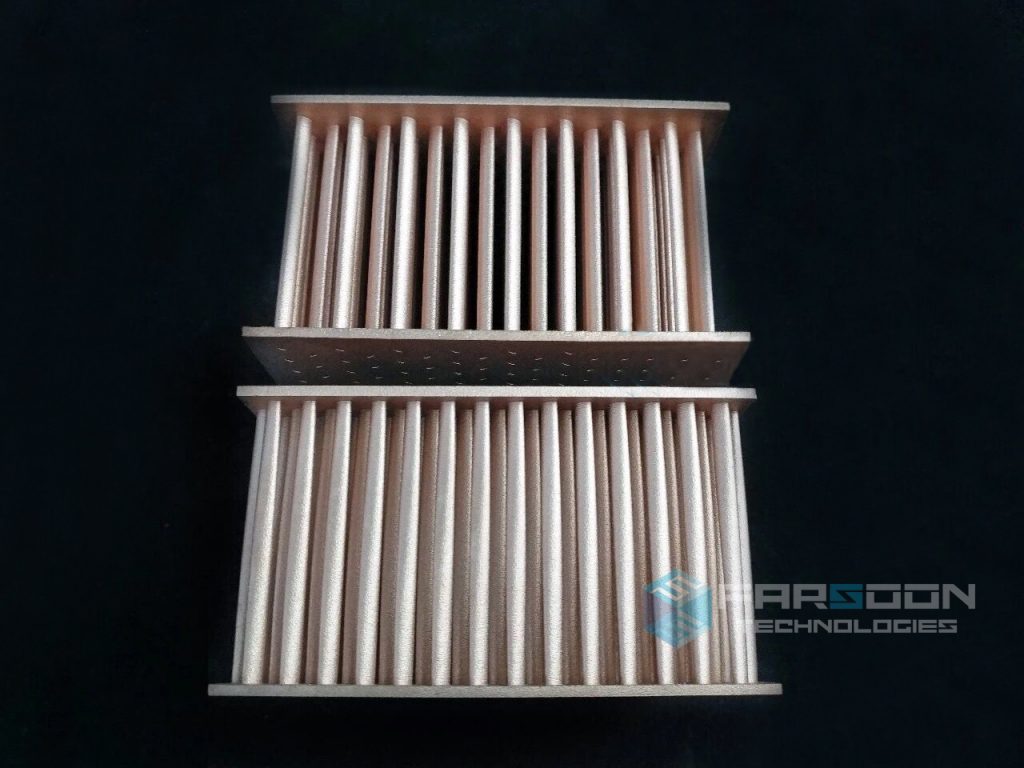Farsoon Technologies, a metal and polymer 3D printer manufacturer founded in China, has developed a method of additive manufacturing with pure cooper. The product of a project conducted in collaboration with industrial partners throughout 2017, the technique has been proven in the production of a functional heat exchanger.
In conversation with Chenlu Fang, Global Marketing Manager at Farsoon, 3D Printing Industry learns more about the secret to this challenging technique.

Farsoon’s secret to pure copper additive manufacturing
Though frequently used in aerospace, automotive and electronic component manufacturing, pure copper is unsuitable for many common laser-operated 3D printers due to its high reflectivity. In some systems this is due to a laser’s color and frequency, which is typically infrared.
At German machine tool provider TRUMPF, and Aachen’s Fraunhofer Institute for Laser Technology (ILT) this obstacle has been overcome by the use of a green laser (See SLM in Green, and TRUMPF precious metal 3D printing). As Fang explains though, this is not the case with Farsoon’s methodology. “We didn’t use a green laser for processing pure copper,” Fang states.
“We developed it based on our current metal system with a regular fiber laser, all hardware remaining the same as our standard metal systems.”
Instead Farsoon’s “secret” is in its open platform ethos. Without locking down the parameters of its machines, Farsoon enables operators to access advanced processing settings and use third party materials, which was essential to 3D printing pure copper.
“For developing the pure copper,” Fang adds, “we conducted a large number of tests to obtain the best parameters especially on laser power, fill scanning speed and fill scanning line spacing.” With these optimal parameters, the team were ultimately able to counter the adverse effects of copper’s reflectivity, and achieve the perfect part density and performance.
High quality copper for all
A parametrically designed heat exchanger was used as a proof-of-concept object for Farsoon’s copper 3D printing method. For thermal management, this part has a complex spiral geometry, and was produced as a single piece. Wall thickness for the part was set to 0.5 mm and, with this design, part weight was reduced by 30%. After 3D printing, the part was annealed at 600℃ for 2 hours. As a result, the part reported 97% density and 16% elongation at break. Traditionally, this heat exchanger would have been made by brazing. Additive manufacturing the part however is also competitive with this process at a 35% cost reduction.
Through the Farsoon open platform, copper 3D printing is now possible on all current Farsoon metal systems.

Fang concludes, “Our goal is to provide the customer with a high quality, yet cost-effective solution for pure copper processing, without investment for replacing any key optical systems, while expanding the capacity of the AM applications.”
Earlier this month Farsoon entered an SLS polymer material development partnership with international aerospace company Airbus. Prior to that, the company inked an agreement with Swiss listed technology group Oerlikon. Together these two partners seek to increase the adoption of additive manufacturing in China.
Is this your award winning Innovation of the Year? Nominate Farsoon Technologies copper and more for the 2019 3D Printing Industry Awards. For more additive manufacturing news updates subscribe to our newsletter, follow us on Twitter and like us on Facebook. Join 3D Printing Jobs for new opportunities in your area.
Featured image shows a pure copper 3D printed heat exchanger. Image via Farsoon Technologies



